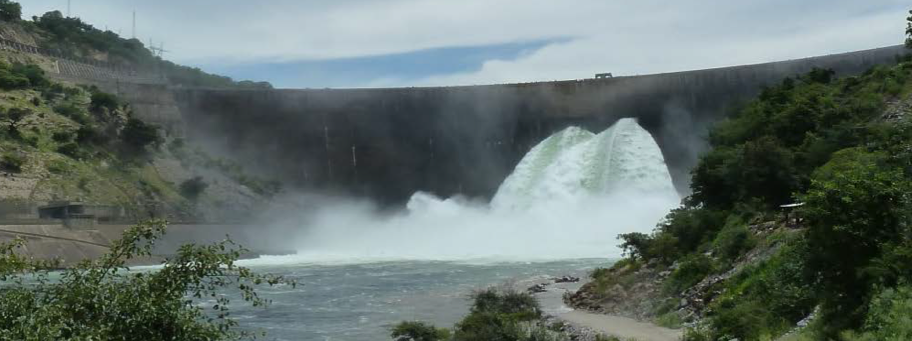Water quality changes by hydropower reservoirs
Today, half of the global runoff is passing through reservoirs and this fraction is increasing. A new project addresses the question how hydropower schemes are changing downstream water quality.
Dams transform running waters into lakes and reduce flow velocity. As a result, particles settle and reservoir sediments accumulate carbon, nutrients and toxic compounds. In deep reservoirs, the upper water column is warming, the water body develops stratified conditions and if the productivity in the reservoir is high, anoxic conditions will affect the bottom waters. In such systems, carbon-rich reservoir sediments can produce methane, which escapes via bubble plumes to the atmosphere. Processes like the trapping of pollutants in sediments can improve water quality in the downstream river system. Other effects such as higher temperature or reduced oxygen conditions harm fish communities. The trapping of particles behind dams can even promote coastal erosion of river deltas. The emission of methane from hydropower reservoirs increases the carbon footprint of this renewable energy source.
In order to address such a wide range of water quality changes, we are developing water quality models for large tropical reservoirs. Our field site is Lake Kariba on the Zambezi River in Southern Africa. Using data from in-situ observations and remote sensing we combine a physical model for water column stability with a biogeochemical model of primary production and respiration. The reservoir model will predict the effect of large reservoirs on downstream water quality. In a second step, we will address the question how fast reversible changes such as a temperature increase or an oxygen deficit will be restored along the flow path downstream of reservoirs.

This project is a contribution of the DAFNE consortium, which is funded by EU Horizon 2020 and coordinated by Prof. Paolo Burlando at ETH Zurich.
The researchers involved in this project are ESC member Prof. Bernhard Wehrli, external page Dr. Martin Schmid and doctoral student Elisa Calamita. The group is affiliated with the Institute of Biogeochemistry and Pollutant Dynamics (IBP) and with external page Eawag.